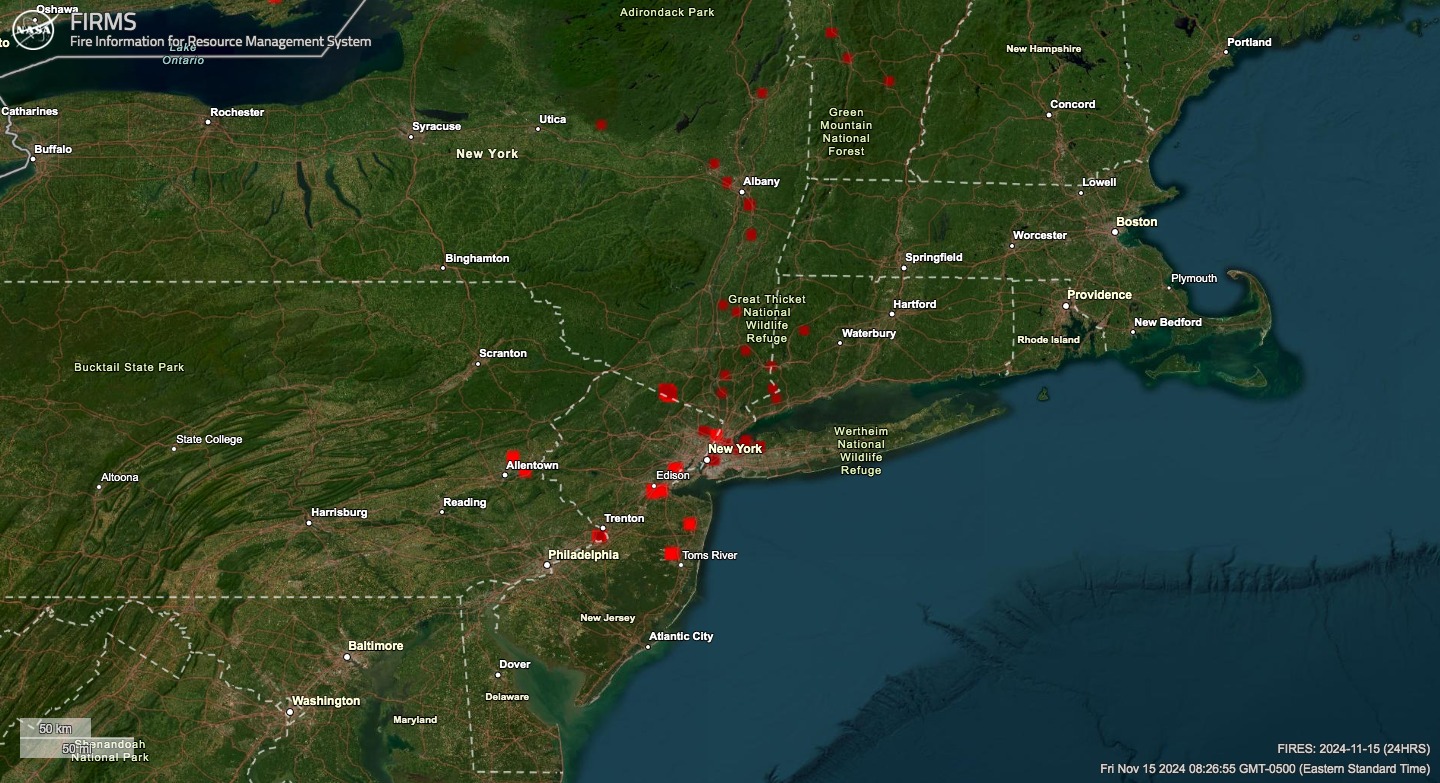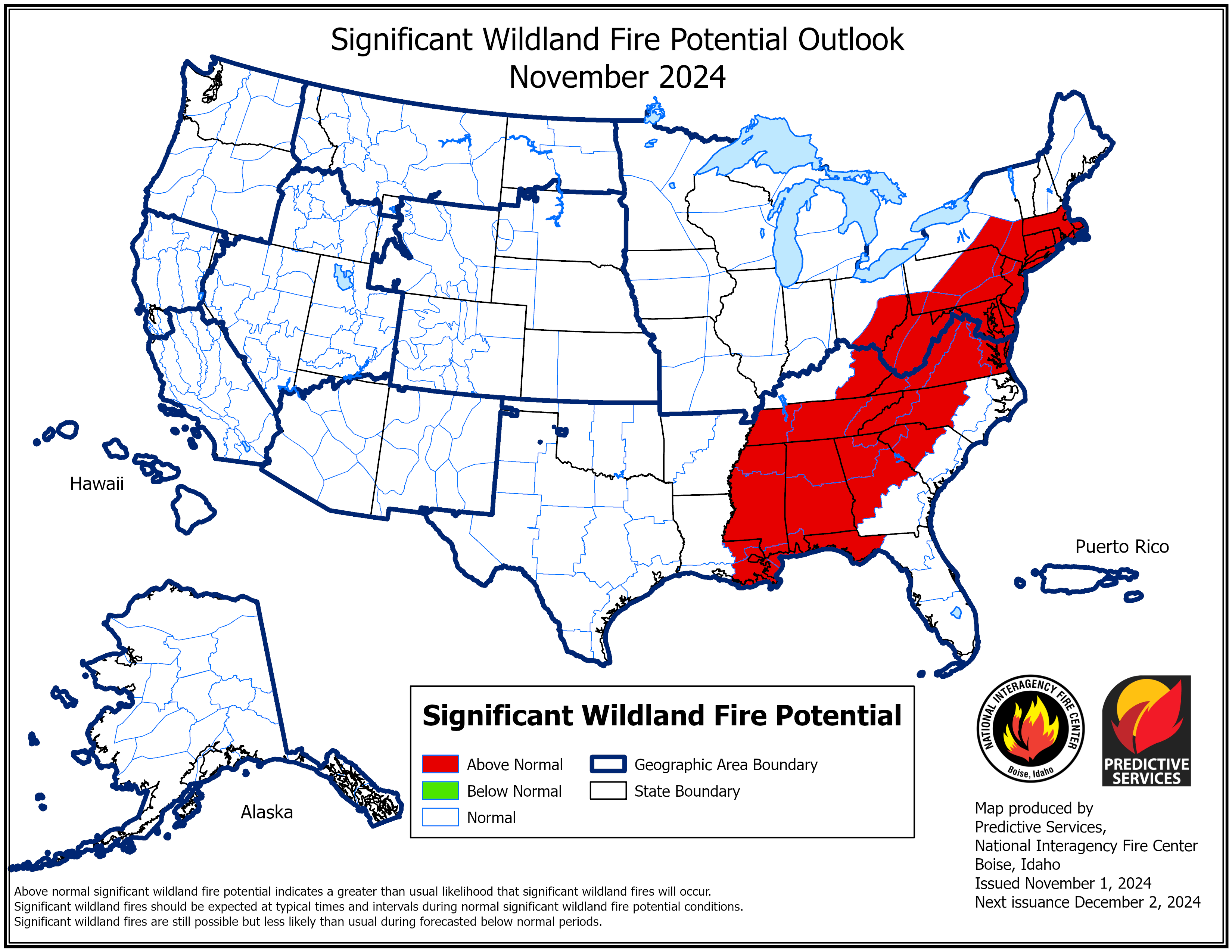
The northeast region of the United States rarely has as many wildfires as compared to states out West, such as California, which are more prone to fires. However, the lack of rain this year has caused the current drought affecting the northeast region, which is only helping to fuel the wildfires that are currently raging there. You do not often see fires burning from NYC and across the Hudson River in New Jersey simultaneously. The lack of rain has caused high drought conditions throughout the region, with no sign of relief soon.
In Southern New Jersey, the conditions are classified as extreme drought. In contrast, severe drought has enveloped Northern New Jersey, part of Eastern Pennsylvania, Southeastern New York State, including most of the New York City area, and Western Massachusetts. According to the U.S. Drought Monitor, several locations across Maryland, eastern Pennsylvania, and New Jersey had recorded a record number of consecutive days without precipitation, including Newark, NJ; Trenton, NJ; Philadelphia, PA; Baltimore, MD; and Washington, DC. Light rains on November 10 ended the streak of consecutive days without measurable precipitation for five to six weeks. Still, these amounts were light and had little impact on the dryness and drought across most regions. According to the U.S. Drought Monitor, unusually high fire danger and numerous brush fires have occurred.
Wildland firefighters and support personnel are still working to contain five large wildfires that have burned 238,989 acres. About 2,000 people are assigned to incidents, including one complex incident management team, 40 crews, 177 engines, and four helicopters. About 3,800 wildland firefighters and support personnel are assigned to incidents, including one complex incident management team, 63 crews, 324 engines, and 20 helicopters, according to the National Interagency Fire Center (NIFC). So far this year, 50,045 fires have burned 8,109,156 acres in the United States. The 10-year average is 52,264 fires that consume 6,540,622 acres, according to the NIFC.
Some of these fires have come close to ski resorts in Pennsylvania but have caused no damage. Blue Mountain Resort in Palmerton, Pennsylvania, reported a fire near the ski resort. “Currently, the resort is safe. The fire is about four miles away from the resort, so we don’t expect to be impacted by it. We have been using our pumps and water retention ponds to help fill tankers,” Ashley Seier, Director of Marketing at Blue Mountain Resort, said in an email earlier this month.
These fires also affected Shawnee Mountain Ski Area, located in East Stroudsburg. These dry conditions have put these mountain communities at risk. The last time the Northeast was this dry was during a drought that lasted almost five years in the 1960s. “It’s hard to remember the last time we experienced such dry conditions. We decided to get the compressors running to supply water if needed. Thankfully, they contained the fire quickly and didn’t need our water sources. The fire was fully extinguished, and the road reopened after about 48 hours,” Rachel Wyckoff, Marketing Director of Shawnee Mountain Ski Area, said in an email earlier this month.
-
Related: SnowBrains Forecast: 2 Small Storms to Bring 5-8″ of Snow to Cottonwoods, 2-6″ Elsewhere in Utah
According to the National Interagency Fire Center, the potential for fires in the northeast region remains the same for the rest of November. The assessment states that the National Significant Wildland Fire Potential Outlook for a large portion of the eastern section of the United States is above normal. The main objective of the National Significant Wildland Fire Potential Outlook is to improve the information available to fire management decision-makers. These assessments are designed to inform decision-makers for proactive wildland fire management, thus better protecting lives and property, reducing firefighting costs, and improving firefighting efficiency.
The Predictive Services Unit began producing wildland fire potential outlooks during the 2002 fire season. These outlooks have undergone many iterations and have changed in terms of their constituent products, time frame covered, timing of issuance, and potential categories. Using these outlooks to infer relative fire season severity may result in comparing dissimilar information or timeframes.
Tragically, an 18-year-old firefighter was killed while battling the massive wildfire that has burned thousands of acres along the New Jersey-New York border. Authorities said a falling tree struck the firefighter. A 14-year-old boy faces arson charges for allegedly starting a wildfire in New Jersey amid drought conditions in the region, police said. The teen, whose name has not been released due to his age, was arrested on November 7 and charged with aggravated arson and causing or risking widespread injury or damage, police said.
The Northeast has been dry and under drought conditions for several months, but meteorologists predict that relief is coming. Significant rain is forecast to arrive amid the driest fall for many cities in the area. A major storm system will develop over the Great Lakes starting Wednesday and track east that night. Rain is expected over the Interstate 95 corridor sometime Thursday morning. This rain will provide much-needed fire weather and drought relief. There is also potential for snow accumulation in western Pennsylvania and Upstate New York, which will hopefully aid suppression efforts as the East Coast continues to experience one of its worst wildfire episodes in recent memory.
